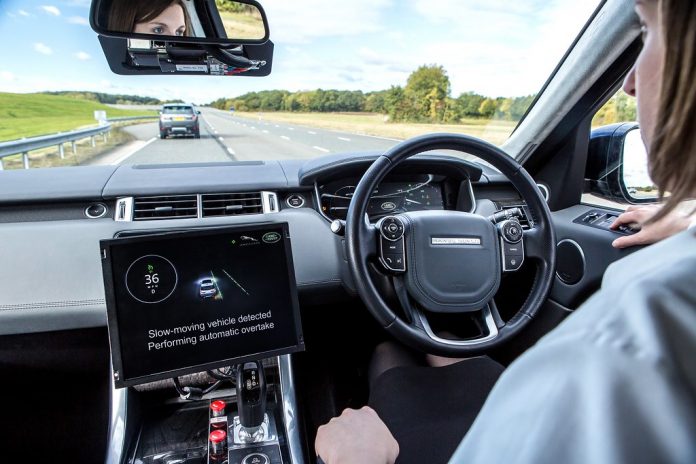This article is written by Dhawal Srivastava, a student currently pursuing B.A. LLB. (Hons.) from the Rajiv Gandhi National University of Law. This is an exhaustive article covering the concept of autonomous vehicles and the legalities associated with them.
Introduction
For many years, it has been perceived by sci-fi enthusiasts and futurists that the future of global transportation would be fascinating. However, as per the status quo, within the transportation industry throughout the world, it is now a well-accepted fact that the future is already here with the revolutionary introduction of self-driven or autonomous vehicles. Global problems such as rising pollution levels, shrinking resources, a population boom and subsequent overcrowding of roads and rocketing operating costs are on the rise. Taking cognizance of the aforestated and many other increasing complications that the world is facing today, a cluster of technologies are coming together to enable the existence of such vehicles with different shapes, sizes and objects of travelling from one destination to another without an actual human driver. This is the entire concept of autonomous vehicles in a nutshell.
Overview
A self-driven, autonomous or driverless vehicle is one which is manufactured with the ability to operate itself and discharge essential functions without the need of any human involvement through the technologically-advanced sensory facility to perceive its surroundings. For the same purpose, a fully-automated driving system is used in such a vehicle so as to make it competent in responding to the external environment the way a human driver manages to do.
As far as the understanding of the current scenario around normal and autonomous vehicles (AVs) is concerned, there are, in toto, six levels of automation that determine the independency and operational potential of any vehicle. These range from zero to five and have been described hereby:
- Level Zero: There is a total reliance on a human driver for driving and other operations at zero level automation of a vehicle.
- Level One: The vehicle has an affixed ADAS or Advanced Driver Assistance System which enhances the driving experience by expediting either of the following processes: accelerating, steering or braking, by providing assistance to the driver with respect to same.
- Level Two: In this level of automation, the ADAS looks into all the three functions of accelerating, steering and braking in certain circumstances. However, the ultimate control still vests with the human driver who looks into additional tasks that are involved in driving a vehicle.
- Level Three: Level Three is the first stage of actual advancement in vehicular technology as ADS or advanced driving system comes into action. ADS can control almost all the tasks associated with driving till the time it requests the human driver to take control over the operation. In such a circumstance, a human driver is required to follow accordingly.
- Level Four: At level four, in a majority of the situations, ADS can self-automate all the functions and driving tasks with next to negligible human intervention.
- Level Five: This is the most advanced stage of automation in which the ADS can fully operate and control the vehicular mobility without no assistance from any human driver whatsoever. This level of automation can be enabled with the involvement of 5G technology as it will also make it possible for the vehicles to communicate not just with the other automobiles on the road but also traffic signals, signs and roads.
Another important checkpoint that needs to be addressed while discussing driving is maintaining the speed of the vehicle. In autonomous vehicles, this is ensured by ACC or adaptive cruise control which helps in ensuring a proper distance between two vehicles and adjusts the speed automatically.
The rise of automated vehicles is usually represented as labour-retentive and accident-reducing. However, the societal and therefore, the subsequent legal impact of these advanced robotic motors is certainly very extensive and cannot be disregarded. Since the revolution has begun majorly in the developed world, there exist laws governing the operation of these technology-driven vehicles in these countries.

Laws regulating autonomous vehicles around the world
Due to the adoption of the Vienna Convention on Road Traffic, 1968 by the majority of the global states, which required a human driver to be an all-time controller of their vehicle on road, automated driving tests were not being considered by the governments across the world for a very long time. This continued till an amendment to Article 8 of the Convention was made in the year 2014 where the countries took cognizance of the changing and evolving technology and provisioned for making it legally permissible to drive a vehicle as long as it can be “overridden” or “switched off” by a human driver.
Dentons, one of the world’s largest law firm, in its report titled “Global Guide to Autonomous Vehicles” emphasised upon the fact that with a paradigm shift in the global automobile industry, states across the world are pushing for laws and regulations to address the issues connected with this advanced technology such as security, accountability and privacy of the users. Despite not being present in large numbers in their countries, governments of the United States of America, United Kingdom, Australia, Canada, New Zealand, China and Germany have started deliberating on an evolved jurisprudence associated with this new scientific advancement that is seen as the future of global transportation. Based on the report released by Dentons, the laws regulating AVs in these seven countries have been discussed henceforth.
Canada
Canada has a tri-levelled governance structure: central, provincial or territorial and municipal. Regulations related to autonomous vehicles are available at all the three levels, with the maximum focus of these laws at the federal level in provinces namely Ontario, Quebec, British Columbia and some other municipalities as per the report. It was also pointed out in the report that safety is a substantial area of focus for the Canadian legislators, with regards to the statutes and regulations governing Autonomous Vehicles, who aim to promote this technology without any compromise on human lives or security.
United States of America
Ironically, the United States of America is most ahead amongst all the countries with respect to the testing of the automated vehicles but is substantially behind with regards to having a regulatory legal framework around AVs. In a federal setup like the one existing in the USA, it is important for inter-state recognition and thus federal legislation is crucial in order to have successful nationwide enforcement of regulation around AVs. A number of states have already passed their individual legal regulations or executive orders and a national level law is being seen as a matter of urgent importance. In 2011, Nevada became the first state in the world to allow AVs on public roads.
China
China is one of those countries leading the transformation to autonomous transportation and is pretty advanced with regards to formulating laws for regulating the same. There already exist road safety rules that incorporate AVs, both at the national as well as local government level. On the central level, the Ministry of Industry and Information Technology in tandem with the Ministry of Public Security and the Ministry of Transport has made Regulations on the Administration of Road Testing of Autonomous Vehicles which is helping with the progress of the innovation in the country. The report also found that the main objective of the Chinese government behind introducing these laws is to build their future around an advanced, high-tech industrial model.
Australia
In Australia, there are different laws related to road safety and motor usage on state as well as the territorial level, creating an irregularity in the legal framework across the states. To counter this problem, the Australian Government, on the recommendation of their National Transport Commission released Australian Road Rules (or ARRs) in 2018 for pan-Australian effectiveness. The Commission, according to the report, is also ardently looking into the matter of integrating the related concerns and options associated with autonomous vehicles into their laws and changing them in order to fit in the new technology.
New Zealand
While the government of New Zealand is enthusiastic and supportive of the testing being conducted for fully or semi-autonomous vehicles, there are no regulations or laws governing automated driving and transportation in the country. However, a positive fact is that there are no restrictive legislation or rules barring the rollout or testing of this new technology.
Germany
Already a leader when it comes to automobile manufacturing, Germany is also one of the leading states when it comes to self-driven vehicles. As per the report, the country has available a legal plan of action for autonomous vehicles and a nationwide extension of the same is needed for proper implementation.
United Kingdom
The United Kingdom has got a government that is pro-autonomous vehicles and has a set target of having self-driven automobiles on roads of their country by the year 2021. The administration is of the opinion that such vehicles will make it simpler, safer and attainable for everyone. The responsibility of supervising driverless vehicles, their testing and deployment are vested with the Department of Transport of the UK Government.
Apart from these, countries like Japan, Sweden, Switzerland, Singapore and UAE have taken significant steps towards the development of AVs and their regulatory laws. France has also released its blueprint for AVs in the year 2014 itself in which allocation of distinct zones for the purpose of testing, R&D projects around AVs and automated driving were announced.
Situation in India
The automobile industry in India, 7.1 per cent of the Gross Domestic Product (GDP) of the country, is one of the largest in the world which has a substantial contribution to the domestic employment, manufacturing and production sectors, exports, foreign trade and revenue. Without any speck of doubt, the future of this important industry lies in innovation, advancement and most importantly, automation. Many Indian and foreign companies are therefore focussing on investing in autonomous vehicles and their introduction in the country.
On a global level, several automobile manufacturers and technology giants such as Tesla, General Motors, Audi, Mercedes-Benz, Nissan, Uber, Toyota and many others are investing enormous assets and time towards the development of AVs. However, unlike its international equivalents, the Indian auto industry is still pretty behind and slow in developmental pace. Moreover, a clear absence of intent has been shown by the incumbent government to introduce autonomous vehicles on Indian roads due to fears of massive job losses.
Mr Nitin Gadkari, the Hon’ble Minister of Road Transport and Highways has reasoned that despite them not being against technology, the government could not afford to compromise the employment of 40 lakh drivers in the country when there is already a paucity of 25 lakh drivers in India. Since driving skills are a major source of income for a major chunk of the population, the government insists that the introduction of AVs can lead to unemployment of over 1 crore people. As a result of such administrative resistance, a lot of investors do not see India as a beneficial market for self-driven vehicles and not worth the investment.
Another impediment to this revolutionary project is the poor condition of the roads and highways of the country which depict infrastructural lapses and cause excessive casualties due to accidents. Nevertheless, these challenges and shortcomings are not a hindrance for many indigenous startups and established players like Tata and Mahindra from expending on the evolution of the AV sector.
It cannot be ignored that the rollout of the AV technology in India will, in turn, facilitate working on problem areas such as pollution levels, carbon-emissions, usage of fuels, overcrowding on roads, better urban planning, development of roads and transport systems and enhanced network connectivity.
What legal challenges does it pose for India
The current legal framework that governs automobiles in India poses a serious obstacle for the introduction of the automated vehicles in India and a serious legal-policy transformation needs to be undertaken to achieve the needful.
Currently, automobiles and their operation in India are regulated and governed by a statute named the Motor Vehicles Act, 1988 which does not legally permit and sanction the usage of autonomous vehicles in India. In fact, the regulatory system is so restrictive and complicated in nature that even testing of AVs is not allowed within India. The draft Motor Vehicles (Amendment) Bill of 2017 does provide for testing. However, not much progress has been made post the proposing of the bill.
Another significant issue that arises with respect to providing legal sanction to AVs is the allocation of liability in case a self-driven vehicle hits a pedestrian or another automobile on the road. As per the current laws in India, there arises a no-fault liability as per section 140 of the Motor Vehicle Act, 1988 on the owner or insurance company in case of fatality or permanent disability.
There are also apprehensions regarding privacy issues that arise with the emergence of AVs, as these vehicles require an enormous amount of personal data and user preferences.
Suggestions for proposed future laws related to autonomous vehicles
A thorough examination of the incumbent legal regime regulating the automobile industry in India needs to be undertaken so as to overcome its shortcomings and make space for the introduction of automated vehicles and their associated provisions.
- There is a necessity for allowing the issuing of licenses for trials of the automated vehicles and the release of vigorous guidelines providing for safety guarantee systems.
- With regards to fixing liability in cases of accidents, the new legislation should address issues such as what led to the mishap; whether it was a technical glitch (such as coding or design error) or a malware/cyberattack on the algorithm running the vehicle by a hacking third-party.
- Taking into consideration the several nuances when it comes to the development of the technology, the lawmakers have to ensure that adequate data protection and privacy safeguards have been provided to the users in the new law.
- Every new innovation brings into attention the important legal question of intellectual property right protection. AVs are not an exception and should be incorporated in the IPR laws.
- There will also be a transformation in the insurance scenario around motor vehicles as the legal onus will now shift from car owners to manufacturers, coders or technology firms. There will be altogether completely different threats such as a software failure or AI-related problems that will invoke the arising of insurance claims.
Conclusion
It must be noted that the paramount purpose of any new technology is the benefit and safety of the general public. No innovation is absolutely error-free, AVs being no exceptions. Thus, adequate testing is needed to ensure their security standards for human users and future laws need to be stringent on provisions related to the determination of liability. Moreover, the fears of the government with respect to job losses and unemployment after the introduction of AVs in India are not completely wrong. However, it cannot be ignored that the technology will facilitate the opening up of various newer and diverse avenues such as in the field of Artificial Intelligence, Information Technology, engineering, robotics, automobile and software development in India. These industries need to be taken care of for the future depends greatly on them.
References
- https://www.twi-global.com/technical-knowledge/faqs/what-is-an-autonomous-vehicle
- https://www.forbes.com/sites/alexknapp/2011/06/22/nevada-passes-law-authorizing-driverless-cars/
- https://www.makeinindia.com/article/-/v/make-in-india-sector-survey-automobile#:~:text=The%20automobile%20sector%20of%20India,gross%20domestic%20product%20(GDP).&text=It%20also%20contributes%20to%20nearly%2022%25%20of%20the%20country’s%20manufacturing%20GDP.
- https://www.techrepublic.com/article/autonomous-vehicles-how-7-countries-are-handling-the-regulatory-landscape/ .
LawSikho has created a telegram group for exchanging legal knowledge, referrals and various opportunities. You can click on this link and join:
 Serato DJ Crack 2025Serato DJ PRO Crack
Serato DJ Crack 2025Serato DJ PRO Crack










 Allow notifications
Allow notifications



